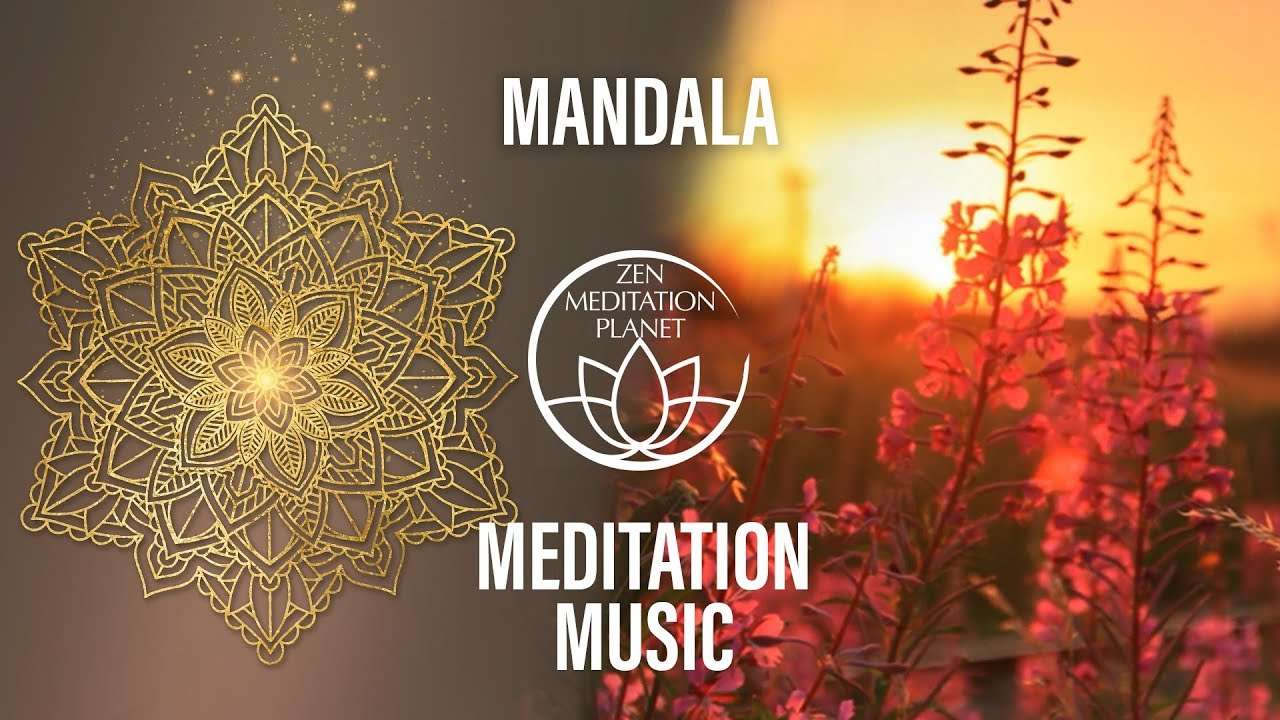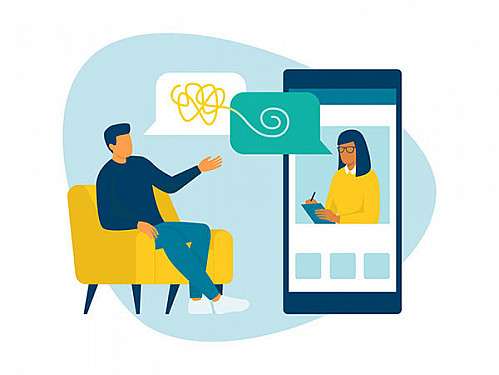I wish I could tell you that playing calm music in the art room would calm your students down and make them better behaved, but I can’t. I can tell you that there is lots of evidence to show that music does relax us, and that can only be a good thing.
Never ask your students if they want music playing and then put this sort of calming music on. They’ll only be disappointed. It’s better to have it very quietly playing before they enter the room.
There is a lot of evidence to show that natural sounds such as running water and particularly bird song have a calming, relaxing effect. The first three videos on this page include natural sounds. I’ve played this music a lot in my art room, and now my students ask for it. In my classroom, it goes hand in hand with working silently. I never use silence as a punishment but I ‘sell it’ as a welcome moment of calm in their busy, noisy day. There will be students in your class who appreciate a quiet working environment.
Bookmark this page now as you’ll want to come back to it!
The video below is just nature sounds, no music. I love it!
The Minecraft soundtrack was suggested to me by art teacher Tina Walden Haynes. She tells me that Minecraft music has been specifically designed to help people relax and focus for long periods of time. I was surprised that I like it.
The video below is mainly tinkling piano music. This also has a slide show of paintings that could be on your screen if you wish.
Further Reading
If you want to read more about the effects of calm music in the art room, there is an interesting essay here.
You’ll love these Music Art Lessons
 Music & Art Cover Lesson
Music & Art Cover Lesson  Mark Making to Music
Mark Making to Music
More Art Teacher Blog Posts

Enjoy this article, Drop it a like
Like
Or Share it
The Arty Teacher
Sarah Crowther is The Arty Teacher. She is a high school art teacher in the North West of England. She strives to share her enthusiasm for art by providing art teachers around the globe with high-quality resources and by sharing her expertise through this blog.
More Posts

Making art that responds to music can increase sensory awareness, facilitate mindfulness, and encourage emotional expression. Last week’s guest post from music therapist Maya Benattar discussed the value of deep listening to music with our clients in session or for our own self-care and processing as therapists. This week I want to share about pairing music with art-making for another creative approach.
A simple but powerful art therapy activity that you can do with clients is to have them listen to music and paint or draw to respond to the music. Choose (or let your client choose) instrumental music without lyrics. First, ask them to listen to the music for a moment. Then direct them to begin the art. (Or another variation is to listen to the song until it is finished and then create the image/artwork.) This directive can be phrased in a few different ways and each may draw out a different response from your client.
- “Notice an image that comes to mind as you listen and then make a piece of art about that image.”
- “Make a painting that reflects the music you are hearing. Think about colors, lines, shapes, and marks that are inspired by the music as you listen.”
- “As you paint or draw, match your gestures or mark-making to the rhythm of the music so that the music is represented on the page.”
- “Notice the emotions and sensations that arise in your body as you listen to the music. Paint or draw to represent the feeling of the music on the page.”
- “Listen mindfully to the music until it ends. Notice your breath and sensations in your body as you listen. Allow images to arise in your mind as you listen.” When the music has ended, ask the client to make art of the image that came to mind.
You may want to remind your clients that there is no right or wrong way to respond to the music. They should set aside preconceived expectations, try to focus on mindful immersion in the music and art, and trust their intuition as they work.
There are multiple benefits to this art exercise, which can vary based on the structure, the process, and the clients needs. I find that this art therapy directive helps clients to practice mindfulness (after we have talked about mindfulness in art-making), have a more intuitive experience of art, and be more in touch with their body, sensations, and emotions. The music helps to keep clients focused on the present moment and also helps to provide a starting point for inspiration. For clients that are very cognitively focused, this can be a good exercise to encourage something different, helping them step away from planning and overthinking. In Expressive Therapies Continuum*, Lisa Hinz suggests painting to music as an art activity that activates the Kinesthetic-Sensory Components and the Affective Component. In Mindfulness and the Arts Therapies*, Carolyn Van Dort and Denise Grocke share about leading clients through an experience of mindful relaxation, listening to music, observing images that come into the mind, and then writing about or making art of these images. This process both helped clients to develop mindfulness and to develop deeper self-understanding through the symbolic images that arise from the unconscious.
I didn’t realize how much of an effect the way the directive is phrased could have until trying this activity in a few different settings. On my own, my natural inclination is to use this as a chance for intuitive, abstract art, responding with colors, gestures, and marks that respond to the music as I listen. When doing this activity in an art therapy consult group, the suggestion was given to notice an image that arises in your mind, which led me to include something more representational.

For another variation, the therapist can intentionally choose a few pieces of music that are very different from each other in rhythm, temp, and the emotions that they evoke. Have clients do a different art piece for each song to help highlight the differences both in the sensory aspects of the music and the emotions that are triggered. Personally, doing this activity in a training several years ago was a very helpful experience for me in connecting to my bodily sensations and noticing how I am affected by different sensory inputs.
Try to be mindful of the art media that you are providing, of course. Generally, this is an art therapy exercise that will be best done with a fluid media – I love to do watercolor on wet paper – so that the movements, sensations, and emotions can be easily expressed. However, there may be circumstance in which a more structured drawing medium will be better for your client and this should be considered. I know there are also circumstances in which art therapists can only really provide basic drawing materials like colored pencils and markers (such as school-based and home-based services), but this activity can still be enjoyable and beneficial with these media.
As always, I’d love to hear your thoughts! Comment below – have you tried this intervention with clients or done this art activity yourself? And I always love to see the art that others are doing – if you share a picture of your music-inspired art on Instagram, be sure to tag @creativityintherapy so that I can see it.
Want to learn more? Scroll down for Amazon links to the books that I mentioned. They are both a great art therapy resource.
For more ideas and tips about art in therapy, be sure to sign up for the newsletter: http://eepurl.com/bOu5yj
Carolyn Mehlomakulu, LMFT-S, ATR is an art therapist in Austin, Texas who works with children, teens, and families. For more information about individual therapy, teen and child counseling, family therapy, teen group therapy, and art therapy services, please visit: www.therapywithcarolyn.com.
This blog is not intended to diagnose or treat any mental health conditions. All directives, interventions, and ideas should be used by qualified individuals within the appropriate bounds of their education, training, and scope of practice. Information presented in this blog does not replace professional training in child and family therapy, art therapy, or play therapy. Art therapy requires a trained art therapist.
* This blog includes affiliate links (see full disclosure here). If you’d like to help support the blog without any extra cost to you, please click through on links and shop as you normally would. Your support is greatly appreciated!
Relaxation techniques: Try these steps to reduce stress
Relaxation techniques can reduce stress symptoms and help you enjoy a better quality of life, especially if you have an illness. Explore relaxation techniques you can do by yourself.
By Mayo Clinic Staff
Products and Services
If you receive care at Mayo Clinic, consider registering for this online class: Introduction to tai chi
Relaxation techniques are a great way to help with stress management. Relaxation isn’t only about peace of mind or enjoying a hobby. It’s a process that decreases the stress effects on your mind and body. Relaxation techniques can help you cope with everyday stress. And these techniques can help with long-term stress or stress related to various health problems, such as heart disease and pain.
Whether your stress is spiraling out of control or you’ve already got it tamed, you can benefit from learning relaxation techniques. Learning basic relaxation techniques is easy. Relaxation techniques are often free or low cost, pose little risk, and can be done nearly anywhere.
Explore simple relaxation techniques and get started on de-stressing your life and improving your health and overall well-being.
The benefits of relaxation techniques
When faced with many responsibilities and tasks or the demands of an illness, relaxation techniques may not be a priority in your life. But that means you might miss out on the health benefits of relaxation.
Practicing relaxation techniques can have many benefits, such as:
- Slowing heart rate
- Lowering blood pressure
- Slowing breathing rate
- Improving digestion
- Controlling blood sugar levels
- Reducing activity of stress hormones
- Increasing blood flow to major muscles
- Reducing muscle tension and chronic pain
- Improving focus and mood
- Improving sleep quality
- Lowering fatigue
- Reducing anger and frustration
- Boosting confidence to handle problems
To get the most benefit, use relaxation techniques along with other positive coping methods, such as:
- Thinking positively
- Finding humor
- Problem-solving
- Managing time and priorities
- Exercising regularly
- Eating a healthy diet
- Getting enough sleep
- Spending time outside
- Reaching out to supportive family and friends
Types of relaxation techniques
Health care providers such as complementary and integrative health specialists and mental health providers can teach many relaxation techniques. But you can also learn some relaxation techniques on your own.
In general, relaxation techniques involve refocusing your attention on something calming and increasing awareness of your body. It doesn’t matter which relaxation technique you choose. What matters is that you try to practice relaxation regularly to reap its benefits.
Types of relaxation techniques include:
-
Autogenic relaxation. Autogenic means something that comes from within you. In this relaxation technique, you use both visual imagery and body awareness to reduce stress.
You repeat words or suggestions in your mind that may help you relax and reduce muscle tension. For example, you may imagine a peaceful setting. Then you can focus on relaxing your breathing, slowing your heart rate, or feeling different physical sensations, such as relaxing each arm or leg one by one.
-
Progressive muscle relaxation. In this relaxation technique, you focus on slowly tensing and then relaxing each muscle group.
This can help you focus on the difference between muscle tension and relaxation. You can become more aware of physical sensations.
In one method of progressive muscle relaxation, you start by tensing and relaxing the muscles in your toes and progressively working your way up to your neck and head. This is best done in a quiet area without interruptions. You can also start with your head and neck and work down to your toes. Tense your muscles for about five seconds and then relax for 30 seconds, and repeat.
-
Visualization. In this relaxation technique, you may form mental images to take a visual journey to a peaceful, calming place or situation.
To relax using visualization, try to include as many senses as you can, such as smell, sight, sound and touch. If you imagine relaxing at the ocean, for instance, think about the smell of salt water, the sound of crashing waves and the warmth of the sun on your body.
You may want to close your eyes, sit in a quiet spot, loosen any tight clothing, and focus on your breathing. Aim to focus on the present and think positive thoughts.
Other relaxation techniques may include:
- Deep breathing
- Massage
- Meditation
- Tai chi
- Yoga
- Biofeedback
- Music and art therapy
- Aromatherapy
- Hydrotherapy
Relaxation techniques take practice
As you learn relaxation techniques, you can become more aware of muscle tension and other physical sensations of stress. Once you know what the stress response feels like, you can make a conscious effort to practice a relaxation technique the moment you start to feel stress symptoms. This can prevent stress from spiraling out of control and decreasing your quality of life.
Remember that relaxation techniques are skills. As with any skill, your ability to relax improves with practice. Be patient with yourself. Don’t let your effort to practice relaxation techniques become yet another stressor.
If one relaxation technique doesn’t work for you, try another technique. If none of your efforts at stress reduction seems to work, talk to your health care provider about other options.
Also, keep in mind that some people, especially those with serious mental health issues and a history of abuse, may experience feelings of emotional discomfort during some relaxation techniques. Although this is rare, if you experience emotional discomfort during relaxation techniques, stop what you’re doing. Consider talking to your health care provider or mental health provider.
There is a problem with information submitted for this request. Review/update the information highlighted below and resubmit the form.
From Mayo Clinic to your inbox
Sign up for free, and stay up to date on research advancements, health tips and current health topics, like COVID-19, plus expertise on managing health.
ErrorEmail field is required
ErrorInclude a valid email address
To provide you with the most relevant and helpful information, and understand which information is beneficial, we may combine your email and website usage information with other information we have about you. If you are a Mayo Clinic patient, this could include protected health information. If we combine this information with your protected health information, we will treat all of that information as protected health information and will only use or disclose that information as set forth in our notice of privacy practices. You may opt-out of email communications at any time by clicking on the unsubscribe link in the e-mail.
Thank you for subscribing!
You’ll soon start receiving the latest Mayo Clinic health information you requested in your inbox.
Sorry something went wrong with your subscription
Please, try again in a couple of minutes
- Complementary, alternative, or integrative health: What’s in a name? National Center for Complementary and Integrative Health. https://nccih.nih.gov/health/integrative-health. Accessed Dec. 22, 2021.
- Relaxation techniques for health. National Center for Complementary and Integrative Health. https://nccih.nih.gov/health/stress/relaxation.htm. Accessed Dec. 22, 2021.
- Pizzorno JE, et al., eds. Stress management. In: Textbook of Natural Medicine. 5th ed. Elsevier; 2021. https://www.clinicalkey.com. Accessed Dec. 22, 2021.
- Seaward BL. Essentials of Managing Stress. 5th ed. Jones & Bartlett Learning; 2021.
- Seaward BL. Managing Stress: Principles and Strategies for Health and Well-Being. 9th ed. Jones & Bartlett Learning; 2018.
- AskMayoExpert. Stress management and resiliency (adult). Mayo Clinic; 2021.
See more In-depth



